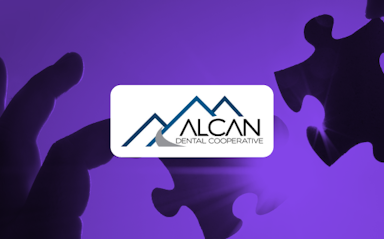Enabling Technology to Connect Better with Your Patients
The Power of Communication
“Hi!” at its physical core can be best defined as a sound with an intonation. But is it so?
Just two letters worth of a sound can evoke curiosity, attention, elation, and a range of other emotions.
Being able to communicate is the foundational block that has elevated humankind to where we stand today – as the species that rules the planet. And it’s not just communicating, but conveying “effectively”, a “wide range of emotions, logical explanations, and reasoning patterns” through a shared common medium – “the language” that has distinguished us from the animalistic voices still used by our genetic ancestors.
On the cusp of the 21st century, we have grown, evolved, and matured. The world is no more a large piece of earthly mass surrounded by deep seas, but a connected environment where talking to a person on the other end is just a matter of a few button clicks.
But, with technology catapulting us so much into the future, are we as connected as we are empowered to be? Do we keep in touch? Do we talk? Do we connect when it matters?
Things are not too bright at the dental practice either, when it comes to patient communication. Even when there is much leverage of technological advancements in terms of improving clinical care, a parallel narrative of using technology to get closer to the patient is not something common that happens at any practice.
Personalizing interactions at the practice is still a nascent project, one that always goes to the back burner, considering the gravity of other issues plaguing the dental landscape. There is never an effort to get back to the patients unless they have booked an appointment or are physically present at your practice. Why are they not remembered?
Setting the Agenda for Patient Communication
Why do you need to spend time brainstorming and perfecting patient communication at your dental practice? What’s in it for the provider, the patient, and the practice?
As the caregiver, communicating the right way is paramount to your practice's success and career growth. Even when you are acing the clinical diagnosis and treatment plans, if you cannot connect to your patient as a calm, knowledgeable figure and put across your findings in a lucid and comprehensible manner, you cannot prosper.
From the patient's side, healthy communication with the provider always leaves the patient happy. When they are educated about the treatment plans, financing options, and the best possible utilization of their plan benefits, they start seeing you as a true partner willing to offer guidance and help them get the best oral care treatment.
Getting prompt appointment reminders, better clarity on the plan coverage and benefits, providing multiple treatment options, and offering financing solutions are the minimum expectation of any patient vising your practice. When you can actively communicate on all these fronts, you create a lasting positive impression by building trust and a lifelong relationship.
For the practice, it’s the numbers that matter. It’s almost pointless if you can’t keep your patients returning to your practice. Patient retention, controlled patient loss, and increased production volume depend on getting your patient on the same page as yours. Just like all relationships- friends or family, the strength of your relationship with your patient solely depends on how well you communicate and how you make them feel.
It’s simple—when you communicate well, you empower your patients for informed decision-making. And it doesn’t stop there. When they choose you over for the second time, your practice has earned a loyal customer who can bring in more revenue, more profits, and even more patients.
Hands down, effective patient communication is a win-win for all the stakeholders. But are you investing enough on the front and closely monitoring the progress?
How Are Things Today?
“70% of patients appreciate getting regular texts or emails from healthcare providers.”
Think of it, your patient has booked the follow-through appointment, and you are hopeful to get the treatment plan accepted and start the procedures. But, as luck would have it, he/she doesn’t show up. You check and find out that they had completely forgotten about the upcoming appointment, and your front-end team failed to follow up. Not exactly the way you wanted it to be played out, right?
It’s important that you connect with them in a way they appreciate the most. Mistimed patient communication can result in:
Higher no-shows and cancellations
Revenue loss and derailed growth plans.
Further patient attrition
What Are You Missing Out On?
You already know the loss when you are not in sync with your patients. But, it’s a much greener path in the opposite direction – to find out what you stand to gain when they are with you at each point in their journey.
There is no need to stress again that your patients are the biggest asset at the practice. So devising that perfect strategy to help them keep coming back can make all the difference between running a successful dental business and a barely manageable one.
When running a business, a close look at the numbers matters, as the devil is always in the details. With regard to patient communication, breaking up the total impact and analyzing each part can help you comprehend the larger picture.
In simple terms, what does effective patient communication entail:
More Revenue
At a dental practice, the net revenue cycle can be broadly generalized as :
(Average patient volume including revisits) X (Average production per patient) – Total overheads
More the number of patients visiting your practice, the more the revenue. The annual frequency of patient visits is also a significant component. And to increase this frequency from one to maybe three or four, you have to keep them updated about their next visits, necessary treatments, etc.
Less need for spending:
When you have a steady stream of patients coming into your practice more than once per year- it means that patient attrition is going down, and you are starting to have a loyal patient base.

If your patients are happy with the care and level of engagement from your practice, it’s more likely that they will recommend you to their family and friends above other specialists in the neighborhood. That means less effort and money spent on advertising, new offers, billboards, flyers, etc., and more money that waits to be re-invested in other departments.
Production numbers:
When a patient receives an email or text message, based on their priority, about their upcoming appointments, they are not likely to miss them. This saves you money and time that could have been lost due to no-shows, cancellations, etc., which could have burnt your margins.
With a fully filled scheduler, daily production targets can be met. The larger the production volume is, the more revenue to your practice.
The Hidden Treasures of the Loyal Patient:
A loyal patient is someone a practice looks forward to. Bringing in more revenue and more referrals with them, a loyal patient is definitely a treasure to the practice.
Reputation Management:
Getting a 5-star rating on Google, Yelp, and other review pages actually helps in converting your online visitors to real-life patients. So how do you reach there?
Asking your patients to leave a review online before they leave your practice is the first step toward good reputation management. With the excellent care that you provide, along with a positive experience at your practice, they are bound to say good things, adding to your reputation.
New Patient Flywheel:
The more you build trust and show your existing patients that your practice is worth their time and money, the more likely you will attract more patients and expand your reach.
An “OK” experience doesn’t make the cut. Talk, engage—make them remember you. You can even directly ask them to refer a patient or wait for them to start talking about your practice to their friends and family. The happier the patients, the more chances of them spreading the word.
The Cost of a No-Show
How much are canceled appointments and no-shows cost you? The answer is simple- too much money, time, and resources could have been spent on delivering a better patient experience.
Let’s look at an example here:
On average the no-show rate of a dental practice is 15%
That’s one out of every five of your appointment slots going non-reimbursable. And with an average appointment value of $150 and close to 262 business days,
15% no-show* 21 appt. slots per day $150 262 days = $123,795 is the average value lost per provider, per year.

By communicating with your patients about their future appointments, you can avoid most missed appointments. With simple, easy-to-use technology, patients should be able to cancel and reschedule ahead of time to save the money and time that goes into a no-show.
Tailoring Technology to Patient Preferences
If you look closely, there are infinite touchpoints throughout a patient’s journey where you have to make sure timely communication is made. But have you already invested enough time to find all of them out?
What paths are your patients taking, and what can you do to make their experience more positive and meaningful is the question of importance. Starting from the very first step—scheduling an appointment—there are several touchpoints to look out for:
Easy Online Scheduling:
“68 percent of patients are more likely to choose a doctor who offers the ability to book and cancel appointments online”
Patients want to be able to do things on their own time. Give them the ability to conveniently book an appointment anytime, anywhere. With online scheduling, you no longer have to worry about what happens after business hours.
Strategically Timed Appointment Reminders:
Send confirmation emails/texts based on patient preference, after they have scheduled an appointment.
Before the appointment, send reminders asking the patient to confirm. If they don’t respond, schedule one more the day before the treatment. This lets you prioritize your tasks and reduce no-shows and cancellations.
Paperless Experience:
Let’s face it, filling out paper forms is a tedious task. Give your patients the option to fill out the forms online. Send digital forms via text or email so they can fill them out when it’s most convenient.
Here, they have the benefit of filling out the forms at their leisure and not being constrained by time or space—for instance, in your congested waiting room.
With the heightened concern for health and infection, it’s normal if your patients to feel insecure waiting in the front room. Transitioning to a contactless patient experience increases patient satisfaction and more patient visits at your practice.
Allowing patients to check in at the practice while waiting in the safety of their vehicle maximizes the convenience factor for them.
Chair-side Experience:
There is always a sense of anticipation and fear factor playing out inside your patient’s head the moment they get seated on the dental chair. Hold a conversation and make them feel comfortable. They would want you to address all their concerns, even if it’s for a normal routine check-up.
To create more transparency, communicate the cost of services, provide detailed treatment plans and the insurance benefits they get from it, all their financing options, and give them a real-time view of their treatment plans and responsibilities using advanced practice management software. Seeing is believing, and when they do see, the chances of your treatment plans being accepted are higher.
Patient Financing:
“Practices have a 70% chance of receiving payment at the time of service, compared with only a 30% chance of successfully collecting it after a patient leaves the practice.”
Give patients the option to make quick payments with just a click by sending them a link to settle balances faster. Help them set up a personalized payment plan and follow them up with inclusive financing options designed to fit individual budgets.
At this point, you’ve managed to create a seamless patient experience before and during the visit. After the patient leaves your office, it’s important you keep that positive experience going with communication, resources, and anything that further improves it.
Ongoing Patient Engagement:
Follow up with your patients after their treatment. Send automated feedback surveys to gather input about your practice. You can also set up a reputation management system by sending them a link to review, even before they walk out of your practice.
Always keep your patients engaged with your practice. Send them automated reminders to notify them of their upcoming appointments, or alert patients about a new service that might interest them.
Offer discounts and promotional offers to specific subsets of your patient lists by setting up campaigns. Share blogs, tips, etc., to keep your patients updated on their oral health so that they always have a reason to come back to your practice.
Keeping patients engaged is one thing, but you need the right technologies to bring about meaningful patient engagement. With CareStack, nurture patient relationships at every point of their journey. Personalize and make every interaction between the patient and your practice easier. Book a demo with us and find out how you can build a seamless patient experience at your practice.





